
ABOUT ME
Hello! I am a broadly trained community and ecosystem ecologist, with a passion for large datasets, global change, and applied science. I am currently Ph.D. candidate in the Suding Lab at the University of Colorado Boulder. In my Ph.D. I am studying how plant communites and ecosystems respond to changes in our climatic conditions with the goal of informing land management decisions. I am particularly interested in the impact of precipitation variablity in arid and semi-arid rangelands. I previously investigated the behavioral ecology of checkerspot butterflies in coastal Maine.Research
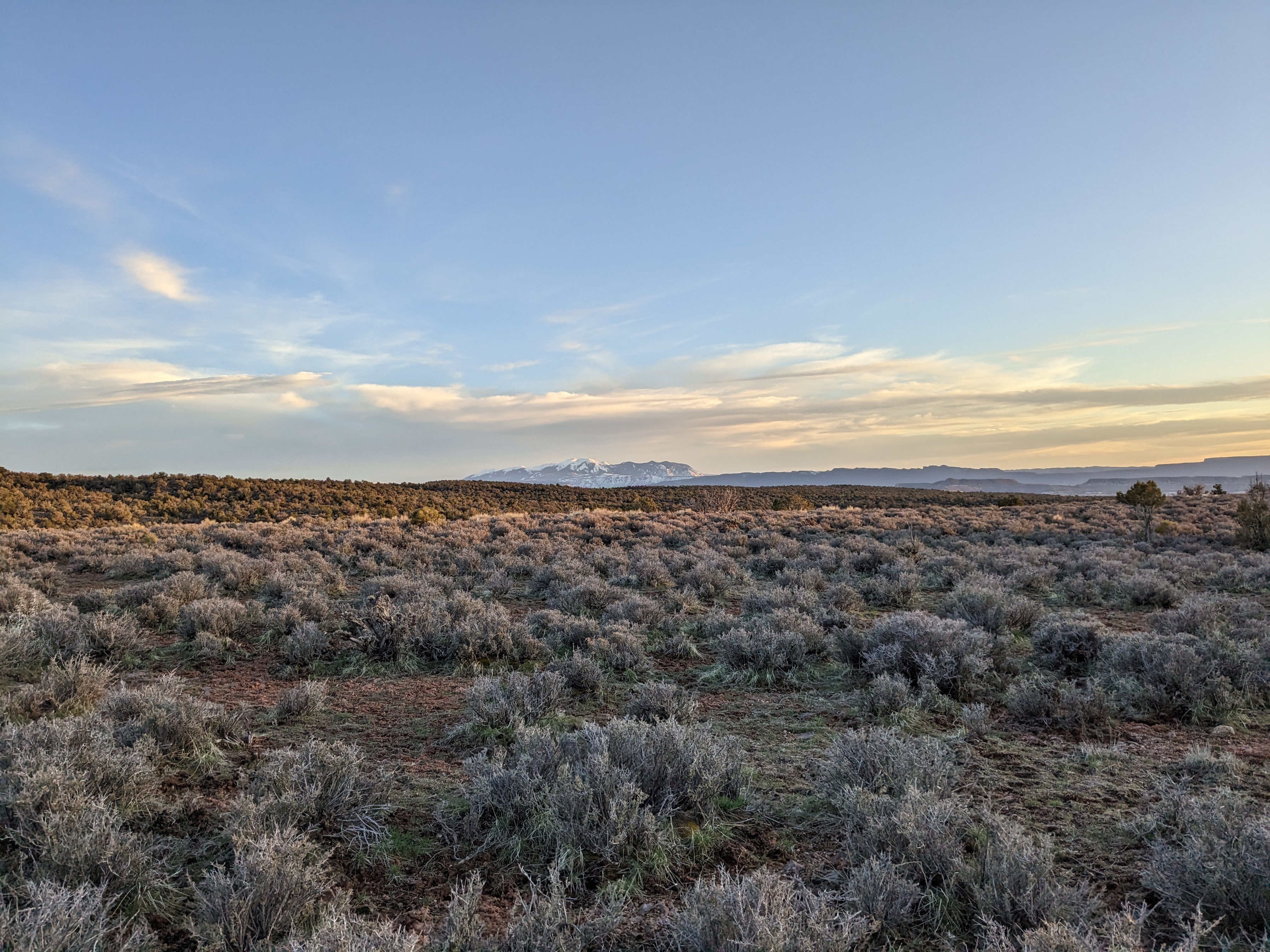
Fire impacts in the Great Basin
Fire is rapidly altering the historical sagebrush steppe ecosystem of the northern Great Basin. At the same time climate projections predict an increase in precipitation variability. However, we currently have a limited understanding of of how these two drivers will interact with each other. In this project we used satellite-based gridded datasets to assess how fire alters the relationship between net primary production and precipitation across a swath of northern Nevada. Using quatitative methods from the causal inference literature, we found that as fire converts sagebrush ecosystems to annual grass dominated systems the senstivity of production to precipitation changes, leading to for more inter-annual fluctuations in production. Importantly, these increased primary production fluctionations have the potential to increase fire hazard particularly under and increasingly variable precipitation regime. Collaborators: Elisa Van Cleemput, Andrew Felton, Laura Dee, Peter Adler, Mike Koontz, Katie Suding
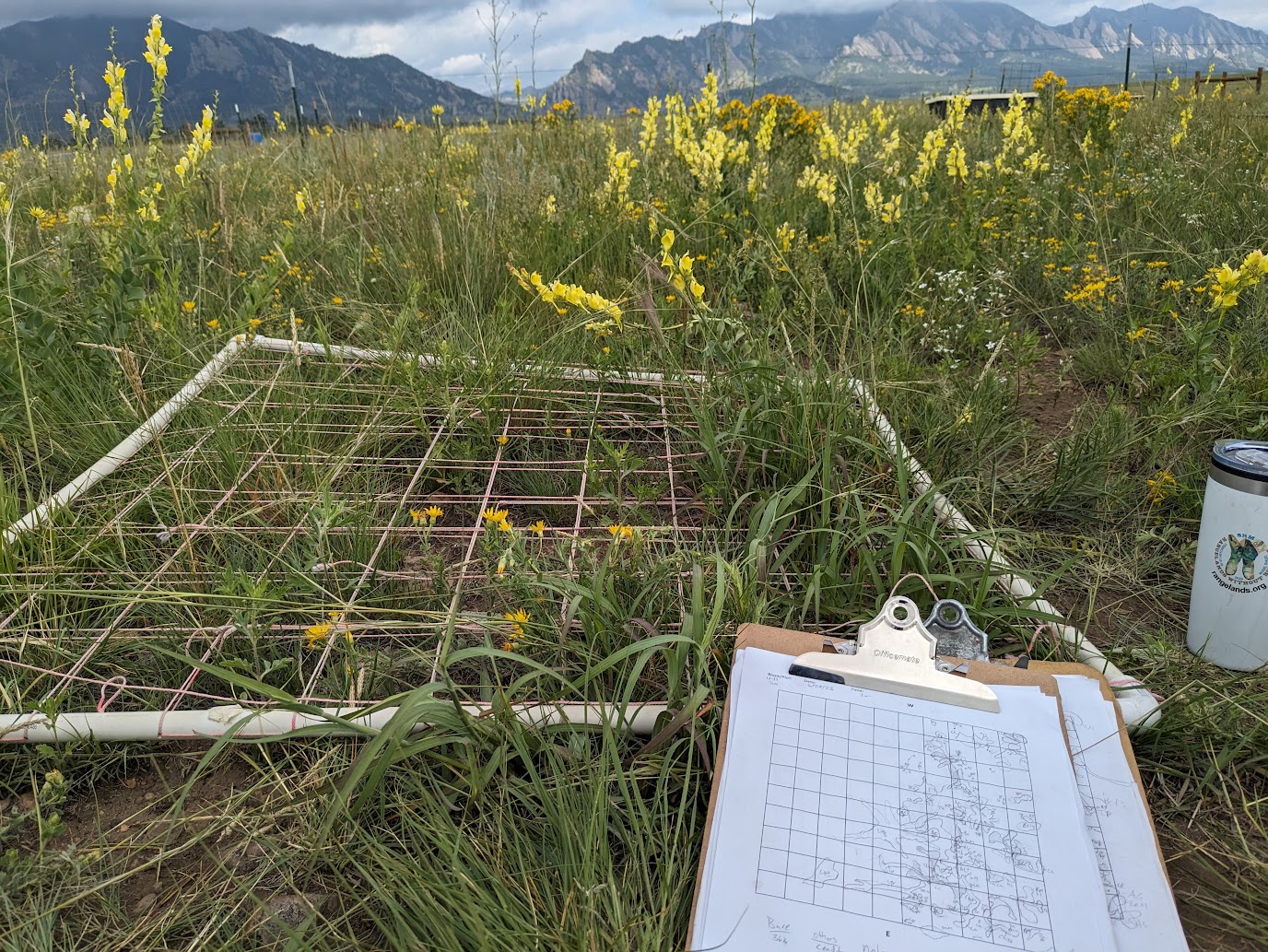
Drought impacts on plant communities
Droughts are becoming increasingly frequent and severe. I use a variety of experimental approaches to ask how droughts will affect plant communities and ecosystem funtioning. One question I am particularly interested in is how the spatial arrangement of communities interacts with drought through effects on plant demography. I am also interested in the effects of intra-season extreme droughts, or extended periods without preciptiation.
Spatial patterns and ecosystem resilience in semi-Arid Grasslands
Semi-arid grasslands are increasingly vulnerable to long-term droughts, which can disrupt biodiversity and ecosystem function. Understanding how vegetation spatial patterns influence ecosystem resilience is critical for predicting landscape-level responses to environmental stressors. In this research, we implement a long-term experiment in a Colorado grassland, simulating extreme precipitation shifts—both drought (-66% of ambient precipitation) and wet periods (+66%), along with low-intensity grazing. Our findings revealed that drought consistently reduced spatial vegetation aggregation but unexpectedly increased plant diversity, favoring stress-tolerant species. Over time, less aggregated plant communities showed signs of recovery, suggesting a dynamic feedback mechanism where stress-adapted species influence ecosystem stability. Low-intensity grazing had minimal direct effects on spatial patterns, reinforcing the idea that its role in shaping grassland biodiversity may depend on specific ecological contexts. These results emphasize the importance of spatial structure in ecological monitoring and conservation, indicating that shifts in vegetation patterning may serve as early indicators of ecosystem change. By integrating spatial aggregation metrics into land management strategies, we can improve predictions of ecosystem responses to climate stressors, informing more adaptive approaches to biodiversity conservation and grassland sustainability. Collaborators: Julie Larson, Hunter Geist-Sanchez, Sarah Elizabeth Stockman, Meghan Hayden, Laura Dee, Katie Suding
Intra-season extreme droughts
In addition to long-term shifts in precipitation, we also expect shifts in the timing of precipitation. This will lead to increasing dry periods at unusual times of the year. To test the impact of these short-term extreme droughts on above and beloground ecosystem processes in Colorado grasslands, we used rain-out shelters to remove 100% of precipitation for five weeks in either the spring or late summer. We found that the impact of drought timing depended on plant community composition. Addionally, while these extreme droughts had only transient effect on above ground primary production, effects on belowground production were stonger and more long-lived. This suggests that as ecologists we may be underestating the effects of short-term droughts by focusing on aboveground responses. Collaborators: Meghan Hayden, Katie Suding
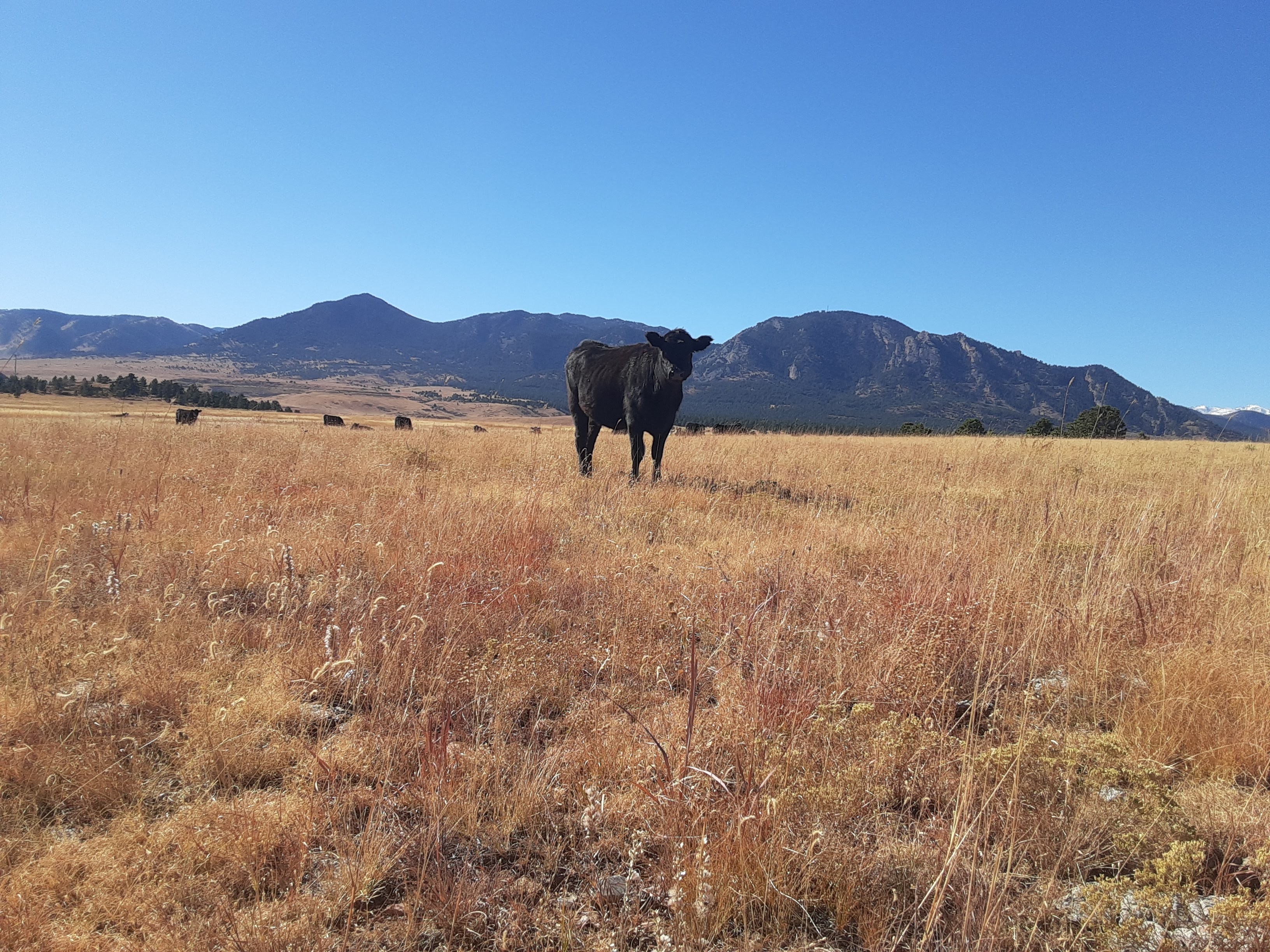
Predicting spatio-temporal variablity in primrary production for land mangement
In semi-arid grasslands, landscape-level variability in primary production is critical for land management, particularly livestock grazing. Productivity can fluctuate widely across space and time, directly impacting forage availability. Understanding how these factors interact at the landscape scale is essential for predicting resource dynamics and making informed management decisions. In this project, we investigate the complex drivers of spatio-temporal variability of aboveground net primary production (ANPP) using a data-rich long-term dataset from a Colorado grassland. Our findings highlight how spatial variation in plant communites and soil characteristics factors interact to increase spatio-temporal functions in ANPP, because different plant communities and soils respond to precipitation falling of different time periods (they even respond to precipitation that fell two-years ago in some cases!).These effects acre compounded by precipitation that can be highly spatially variable across the landscape due to the prevelance of localized covective storms. By incorporating spatial and temporal variability into forecasts, our work provides valuable insights for optimizing grazing strategies and ecological management in water-limited landscapes. Collaborators: Olivia Hajek, David Augustine, Lauren Porensky, Sean Kearney, and David Hoover
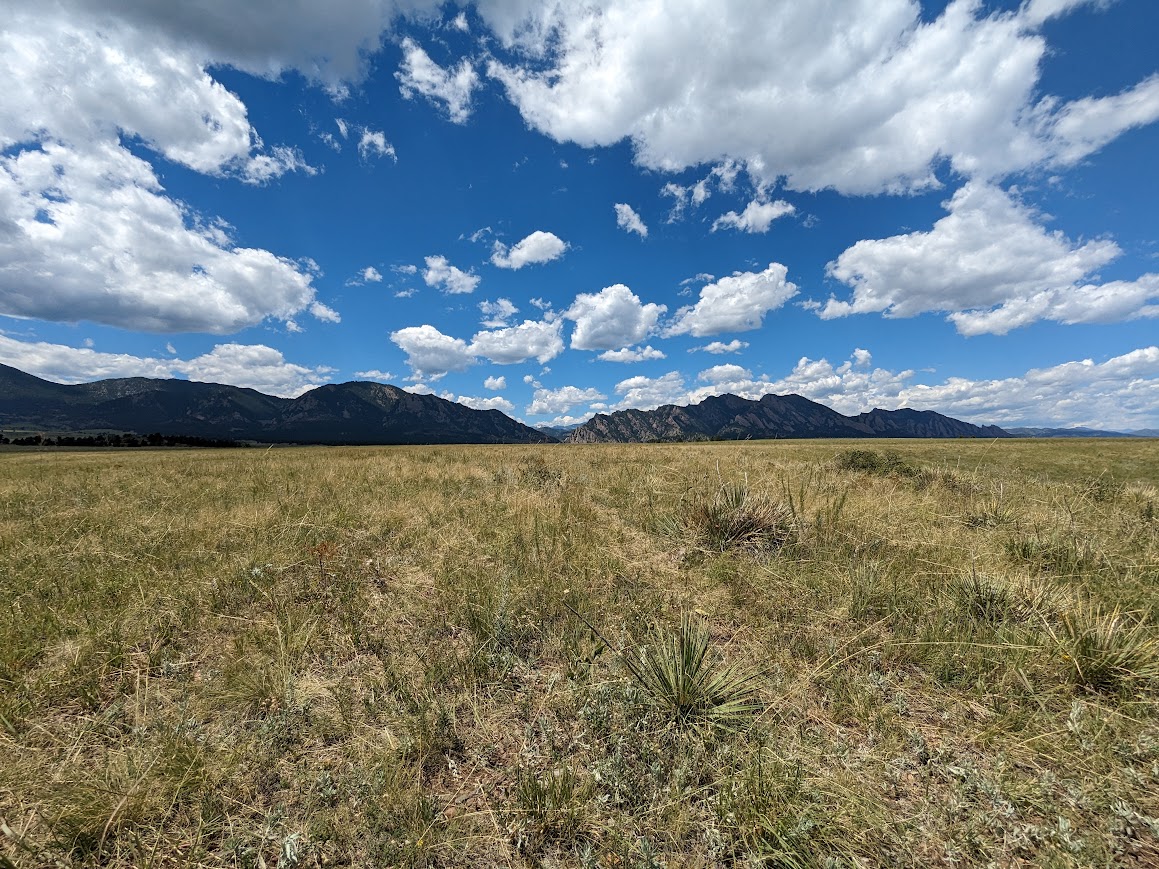
Fire related plant traits
Historically, the Great Plains has been characterized by both grazing and fire. This history may have shaped the strategies of plant in these grassland communities. In this project we are quantifying grassland traits related to flammability and grazing. We aim to test whether there is a trade off in traits such that some species have fire adaptive strategies while others are adapted to grazing. Collaborators: Sam Ahler, Jon Henn, Advyth Ramachandran
OUTREACH
I am enthusiastic about working with youth and adult community members on topics spanning the environmental and ecological sciences. I routinely engage in hands on educational activities.
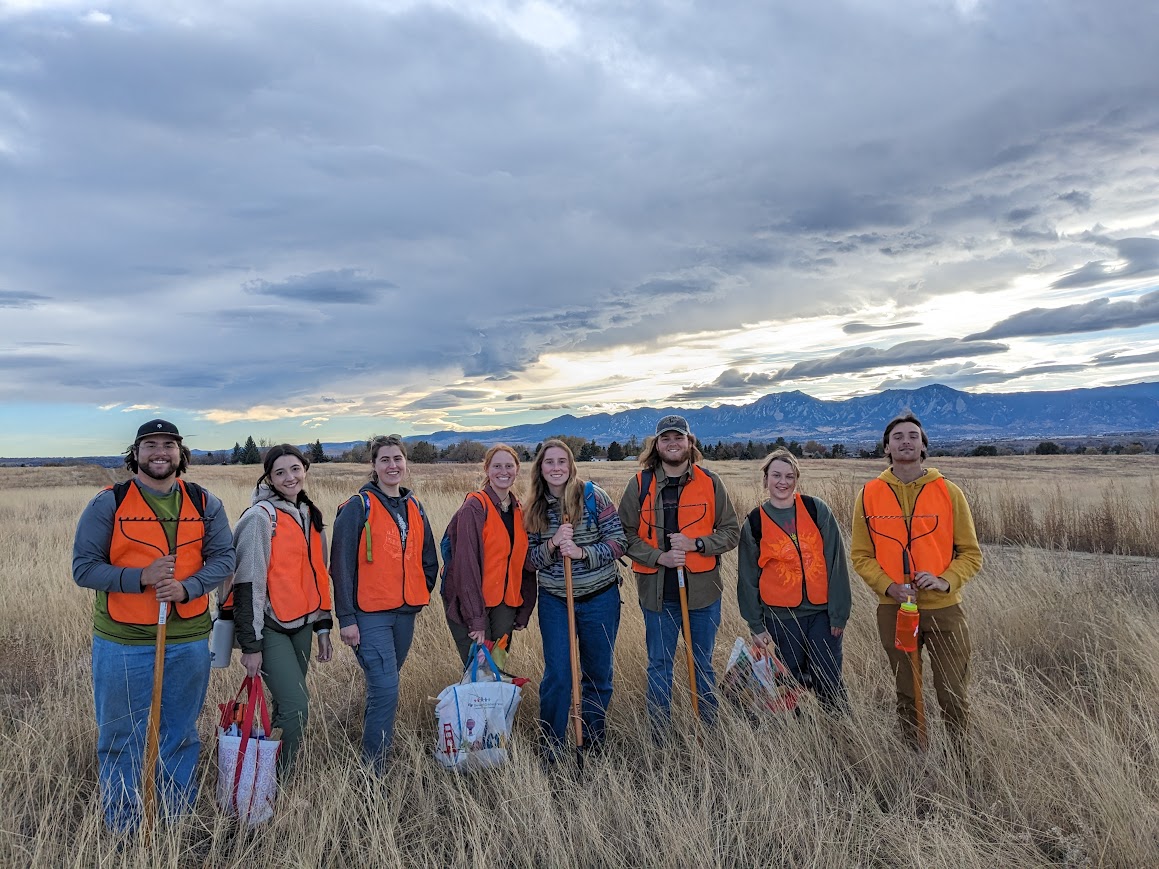
Restoration ecology engagement
In the past, I have served as a science advisor and leader for organizations including, Wildland Restoration Volunteers. WRV brings a wide range of groups from families, to high school students, to retirees out into the field to engage in active restoration projects. In addition, during the fall of 2023, I worked with Katie Suding to develop a field based resotoration ecology lab for and upper level course at CU. Students in this class collected data and used their data to develope a evidenced based restoration plan for a degraded grassland in Boulder County. Then they implemented their own plan in real life!
Mentoring
I find great joy in mentoring students. For several years, I have been involved in mentoring community college students through the Research Experience for Community Colleges program at CU Boulder. In addition, I have worked with numerous CU undergrads on independent study projects. I you are a CU undergrad interested in this research please reach out.